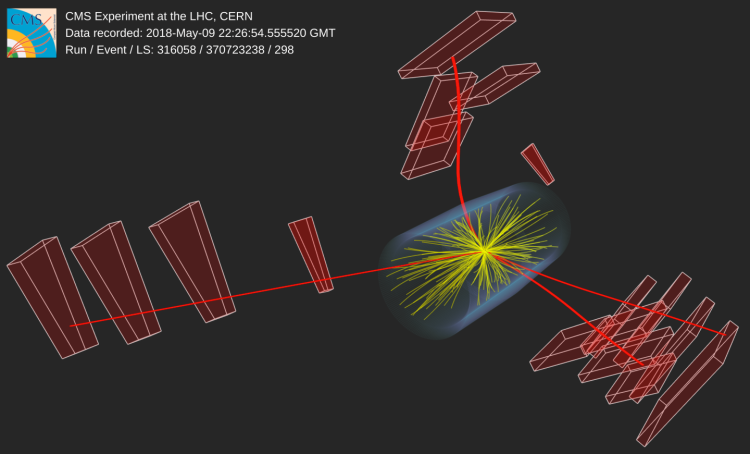
The CMS Collaboration at CERN has conducted an analysis to explore the differences between tau leptons and muons, the two heavier cousins of the electron, and both also fundamental particles in the Standard Model (SM) of particle physics. Electrons, muons and taus belong to the family of leptons, and in the SM they are expected to have the exact same properties, except their mass. The study addresses a pivotal question: do leptons of different flavors really only differ in their mass? Answering this question can shed light on a number of prominent observations that are incompatible with SM predictions, such as the anomalous magnetic dipole moment of muons measured at the g-2 experiment.
To reveal potential new phenomena introducing different behaviors to different lepton flavors, the CMS researchers have studied the decay of the Z boson into four leptons, namely two tau leptons and two muons, Z→ττµµ. Being the heaviest of the leptons, the τ is often suspected to have stronger interactions with unknown particles. For the first time in this research, Z→ττµµ decays are compared with Z→µµµµ decays, and this provides crucial information about the lepton sector of the SM.
Figure 1: Schematic Z boson decay to four leptons.
The decays of the Z boson into four leptons, illustrated in Fig. 1, are quite rare. In these processes, a lepton from the Z boson decay may radiate a photon, the quantum of light. Following the principles of SM, the photon can convert to a pair of leptons, providing in total four leptons in the final state. In case of tau leptons, there will be subsequent decays. The study relies on the excellent muon reconstruction of the CMS experiment by considering τ decays to muons, eventually comparing two sets of events that contain four muons in the final state. The difference is that muons from tau leptons generally have lower momenta because of neutrinos appearing in τ→µντνµ decays. Also the mass of the four-muon system in Z→ττµµ does not reproduce the mass of the initial Z bosons. This property of tau decays is exploited to extract the relative probabilities of the Z boson decays into ττµµ and µµµµ, Rττµµ, using proton-proton collisions at 13 TeV collected during 2016–2018 (see Fig. 2).
Figure 2: The mass of the four-muon system as expected from SM (colored histograms) in comparison with the data (black dots). The Z→µµµµ decays are shown in blue while the Z→ττµµ decays are shown with a dotted black line after being scaled by 6.9. The spectrum in Z→ττµµ is broader than that of Z→µµµµ and is shifted more towards lower values.
The Z→ττµµ signal was not observed within the available data. Rather, an upper bound of 6.9 times the SM expectation was set on Rττµµ at 95% confidence level. The result was also used to constrain, for the first time, new interactions involving two muons and two tau leptons. "Extending the search to muons with lower momentum will bring additional sensitivity and may eventually lead to the discovery of Z→ττµµ decays, sharpening the SM image in its lepton sector", say Fanqiang Meng, PhD student, and Arne Reimers, post-doc at the University of Zurich.
Edited by: Muhammad Ansar Iqbal and Abideh Jafari
Read more about these results:
-
CMS Paper (SMP-22-016) "Search for the Z boson decay to ττμμ in proton-proton collisions at 13 TeV "
-
@CMSExperiment on social media: Bluesky - Facebook - Instagram - LinkedIn - TikTok - Twitter/X - YouTube

